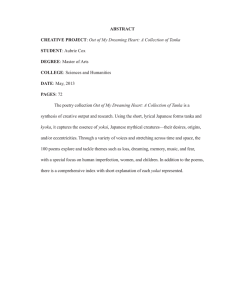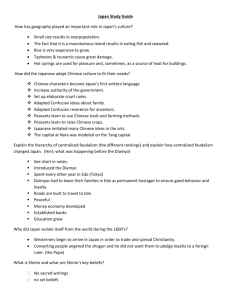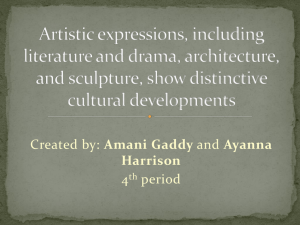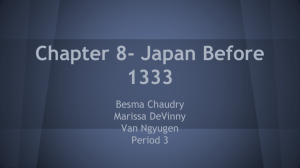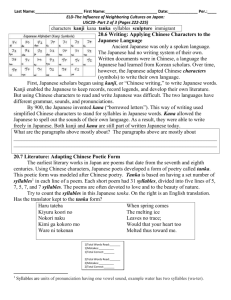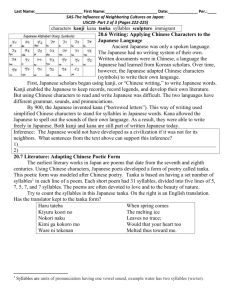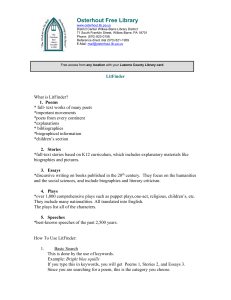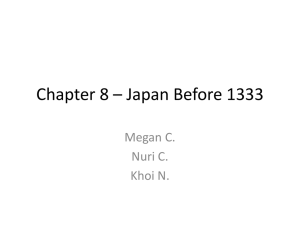Japanese Art, Architecture, Poems & Plays
advertisement
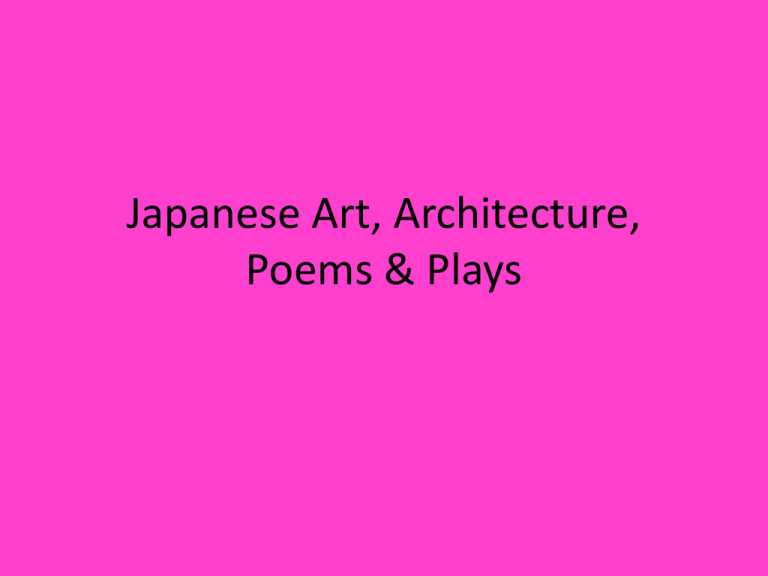
Japanese Art, Architecture, Poems & Plays Art & Architecture • Japan borrowed artistic ideas from China and Korea • Japanese artisans made many things with shiny red and black lacquer coating, such as: • Wooden Statues * Furniture * Household Items • Learned “Landscape Paintings” from the Chinese • Used Ink or Watercolors • Painted Images of Nature or battles on paper scrolls or on silk • Origami – Japanese nobles learned to fold paper to make decorative objects • Flower arranging • Buddhist monks and the Samurai Tea Drinking into a beautiful ceremony ART, ARCHITECTURE Shinto Shrines • Built in the Japanese Style • Built near a sacred rock, tree, or other natural feature • Usually a wooden building with a single room and a roof made of rice straw • People enter the shrine through a sacred gate called a “Torii” Buddhist Temples • Built in the Chinese style • Had massive tile roofs held up by thin wooden pillars • Richly decorated • Had many statues, paintings, and altars Religious Shrines Buddhist Temple Shinto Shrine Poems & Plays • Japanese borrowed China’s writing system – Wrote the language of Chinese pictures that stood for whole words • Since the Japanese & Chinese languages were so different, in the A.D. 800’s they added symbols that stood for sounds (much like the alphabet) – Made reading and writing easier • Believed a person’s handwriting revealed much about a person’s education, social standing, and character • Wrote poems, stories, and plays – Oldest form of poetry was the Tanka • Tanka is an unrhymed poem of five lines (captured Nature’s beauty and the joys and sorrows of life) – Haiku formed in the 1600’s • Consisted of three lines of words with a total of 17 syllables – Were colorful and full of emotion and imagery • Created Plays Plays Created Plays – The oldest type of plays were called “NOH” • • • • Used to teach Buddhist ideas in the 1300s Performed on a simple, bare stage Actors wore masks and elaborate robes They danced, gestured, and chanted poetry to the beat of drums and flutes
